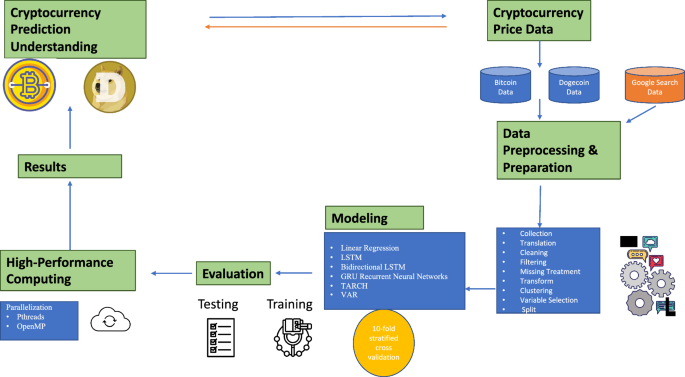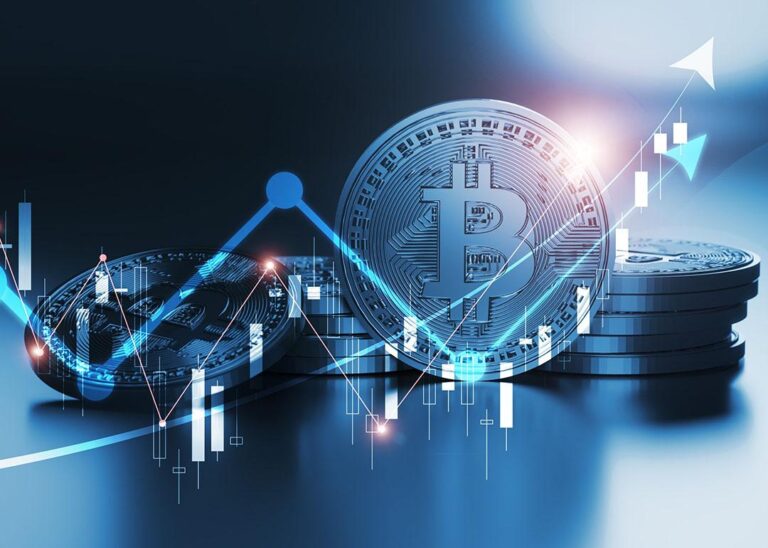Cryptocurrency markets are unlike any other financial ecosystem—fast-moving, emotional, and highly volatile. Prices can soar or crash in hours, driven by a mix of sentiment, speculation, and sudden global events. While human traders struggle to keep up, machine learning (ML) is quietly transforming how investors interpret, predict, and react to these fluctuations. In the battle …
Machine Learning Models and Market Volatility in Crypto

Cryptocurrency markets are unlike any other financial ecosystem—fast-moving, emotional, and highly volatile. Prices can soar or crash in hours, driven by a mix of sentiment, speculation, and sudden global events. While human traders struggle to keep up, machine learning (ML) is quietly transforming how investors interpret, predict, and react to these fluctuations.
In the battle against volatility, machine learning has become one of the crypto industry’s most powerful tools — not for eliminating unpredictability, but for understanding it.
Decoding the Chaos: Why Machine Learning Matters in Crypto
Market volatility has always been the beating heart of the cryptocurrency landscape. But unlike traditional assets, crypto prices are influenced by far more than just fundamentals. Social media trends, regulatory news, macroeconomic data, and even celebrity tweets can trigger massive shifts in sentiment.
Human traders are emotional. Machines are not. That’s where machine learning models come into play. These systems can analyze enormous datasets — from blockchain transactions and price charts to Twitter posts and Google search trends — to detect patterns invisible to the human eye.
At its core, machine learning gives traders a way to turn chaos into context, transforming unpredictable movements into data-driven probabilities.
How Machine Learning Models Work
Machine learning models don’t just follow pre-set instructions; they learn from experience. By training on historical crypto market data, they identify recurring trends and relationships between variables. Over time, they improve their accuracy in predicting how similar situations might play out in the future.
Some of the most commonly used ML techniques in crypto include:
- Regression Models: Used to forecast price movements by analyzing relationships between market indicators, such as trading volume, volatility indices, and sentiment scores.
- Time Series Analysis: Enables models to track and predict the direction of prices over time, taking seasonality and trend shifts into account.
- Reinforcement Learning: Lets algorithms “learn by doing,” adjusting their strategies dynamically based on simulated or real trading outcomes.
- Neural Networks: Mimic the human brain to detect nonlinear patterns — ideal for analyzing noisy, unpredictable crypto data.
The combination of these models helps AI-powered systems not only predict price swings but also adapt trading behavior in real time.
Predicting Volatility: Learning from the Unpredictable
Crypto volatility is notoriously difficult to model. Yet, machine learning thrives in precisely this kind of environment. The key lies in pattern recognition.
For example, ML algorithms can track how Bitcoin’s price reacts to events such as exchange hacks, regulatory announcements, or macroeconomic shifts like inflation data. Over time, the model begins to identify precursors to volatility — such as unusual transaction activity or sudden spikes in trading volume.
Some platforms also use sentiment analysis, where ML tools process thousands of tweets, Reddit posts, and news articles to measure investor mood. When sentiment turns sharply bullish or bearish, it often foreshadows volatility.
By combining these data streams, machine learning models can generate real-time volatility forecasts, allowing traders and institutions to adjust their exposure before markets move dramatically.
Algorithmic Trading: Machines on the Frontline
While early crypto traders relied on intuition, today’s professionals increasingly depend on AI-driven trading bots. These bots use machine learning algorithms that continuously update their strategies based on live data.
For example:
- Supervised learning models can predict short-term price movements based on labeled historical data.
- Unsupervised models can cluster similar trading patterns and identify anomalies that might indicate a price breakout.
- Deep reinforcement learning agents can simulate millions of trading scenarios, learning optimal entry and exit strategies through trial and error.
In practice, these algorithms can make thousands of micro-decisions per second—far beyond human capacity. They spot arbitrage opportunities, minimize risk exposure, and execute trades instantly.
The result is a new breed of machine traders that don’t panic, sleep, or guess. They adapt, learn, and evolve with the market.
Risk Management and Portfolio Optimization
Machine learning isn’t just about chasing profits; it’s also about controlling risk. In a volatile market, predicting downside exposure is as important as spotting upside potential.
ML models are increasingly being used for portfolio optimization, where algorithms continuously rebalance assets based on risk tolerance, historical correlations, and volatility forecasts.
For instance, if a model detects rising uncertainty in Bitcoin’s price, it might automatically shift exposure toward stablecoins or other less-volatile assets. Similarly, AI-powered systems can assess the likelihood of drawdowns and simulate the effects of different hedging strategies before implementing them.
This dynamic risk management helps investors weather crypto’s wild price swings — using data, not emotion.
Blockchain Data and On-Chain Analytics
The open, transparent nature of blockchain provides an enormous dataset for machine learning to analyze. Every transaction, wallet movement, and smart contract interaction can reveal hidden behavioral insights.
Machine learning models can process on-chain data to track liquidity flows, detect whale movements, and even identify accumulation or distribution phases across major tokens.
For instance:
- An increase in dormant Bitcoin wallets suddenly becoming active may indicate selling pressure.
- Rapid growth in stablecoin inflows to exchanges might signal upcoming buying activity.
By interpreting these signals, ML systems can anticipate market sentiment shifts before they show up in price charts — a critical edge in volatile conditions.
Challenges and Limitations
Despite its promise, machine learning in crypto isn’t flawless. The volatility it seeks to predict can also make it unstable. Crypto markets are still young, fragmented, and heavily influenced by speculative behavior — factors that complicate predictive modeling.
Key challenges include:
- Data Quality: Many crypto datasets are noisy or incomplete, especially across smaller exchanges.
- Black-Box Models: Neural networks can be difficult to interpret, making it hard to understand why a model predicts what it does.
- Market Manipulation: Wash trading or pump-and-dump schemes can distort data and mislead algorithms.
- Overfitting: Some models perform well in historical tests but fail under new market conditions.
In short, while machine learning enhances accuracy, it doesn’t guarantee certainty. It’s a powerful assistant, not a crystal ball.
Regulation and the Human Factor
As machine learning becomes central to crypto trading, regulators are beginning to take notice. Questions about algorithmic transparency, data privacy, and market fairness are becoming increasingly important.
Moreover, while automation is accelerating, the human factor remains critical. Experienced analysts still play a vital role in interpreting AI outputs, validating models, and ensuring that automated systems align with real-world logic and ethics.
The most effective trading environments are those where human intuition and machine precision coexist — a partnership between emotion and computation.
The Future of Machine Learning in Crypto Volatility
As the crypto ecosystem matures, machine learning will continue to evolve from predictive modeling to autonomous financial intelligence.
We’re already seeing:
- Hybrid AI models combining blockchain analytics, social sentiment, and macroeconomic data.
- Self-learning DeFi protocols that adjust interest rates based on liquidity and risk forecasts.
- Adaptive exchanges where algorithms manage liquidity pools dynamically to stabilize prices.
In time, machine learning won’t just react to volatility—it will help shape market stability by smoothing inefficiencies, improving liquidity, and identifying systemic risks before they escalate.
Conclusion: Learning from Volatility
In crypto, volatility is not the enemy—it’s the teacher. And machine learning is the student that never stops learning.
By transforming unstructured chaos into structured insight, machine learning gives traders, investors, and institutions the tools to navigate uncertainty with confidence. It doesn’t eliminate risk, but it makes risk measurable.
As algorithms grow smarter and data becomes richer, the line between prediction and prevention will blur — ushering in a future where markets don’t just react to change; they learn from it.
In this new era of intelligent trading, machine learning isn’t merely watching the crypto markets—it’s helping them evolve.








